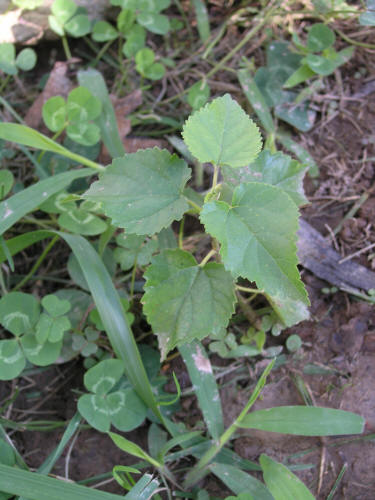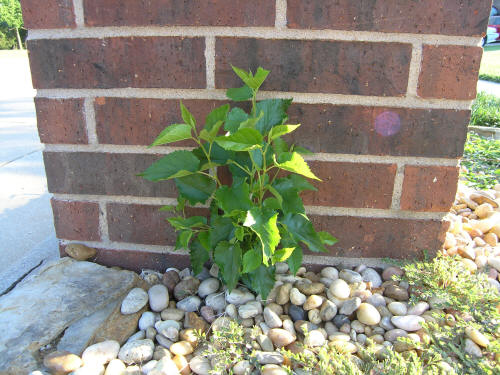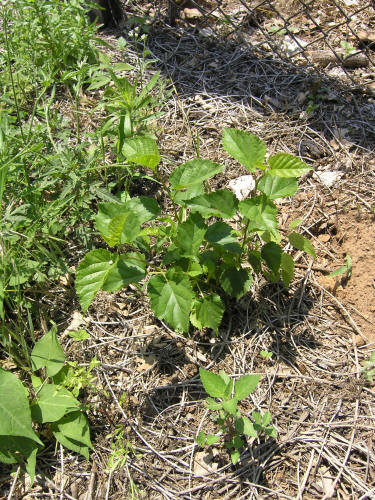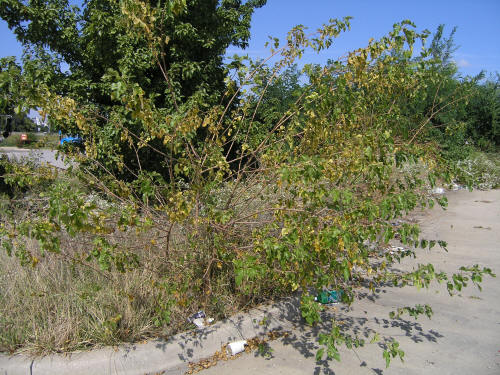White Mulberry
White Mulberry
Morus alba
Moraceae (Fig Family)

▲ ▼ seedlings

▲ ▼ seedlings

▲ seedlings

▲ young plant in fallow field area in Missouri
▲ white mulberry trees had virtually no damage after 2007 ice storm in Springfield, MO
Location on or near Missouri State University campus: a number of mature trees in the residential areas around campus, plus seedlings on campus and everywhere
White Mulberry: (not in Weeds of the Great Plains; not in Weeds of the Northeast)
- small to medium sized tree with glossy green, deeply lobed to un-lobed leaves with serrate margins; leaf undersides lighter green ; petioles 0.5-1 inch long
- twigs yellow-brown and bark becomes orange-brown and furrowed with age
- wood is bright yellow
- is dioecious, with female trees bearing elongated white, red or purple blackberry-like fruit favored by birds, who help distribute seeds
- bulldozing, cutting do not kill; will sprout back from roots, cut stumps
- can be difficult to kill with herbicides--usually need repeated application along with cutting
- initially brought over as a food source for silk worms from Asia, but escaped cultivation
- male trees can be nice medium-sized landscape trees, and may have good yellow fall color
- can hold up very well in ice storms, with very little damage or breakage